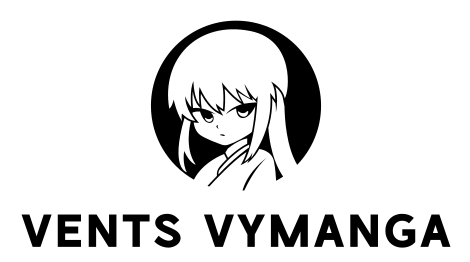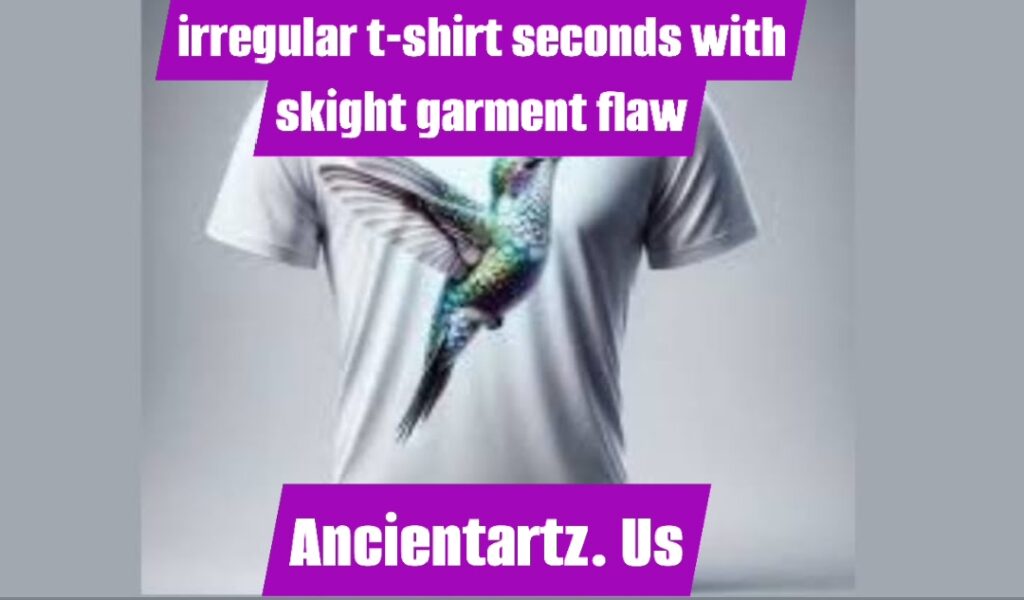Introduction
In the world of fashion, not every garment is perfect. Despite the best efforts of designers, manufacturers, and quality control teams, some items may not meet the strict standards set for first-quality products. These garments are often referred to as “seconds,” indicating that they do not meet the brand’s quality criteria for retail sale. However, while these items may have minor imperfections, they still hold great value, and consumers are increasingly interested in purchasing them. In this article, we will explore irregular T-shirt seconds with slight garment flaws, specifically those with slight garment flaws, and delve into why they have become so appealing to certain segments of the market. This article will also address the differences between regular and second-quality T-shirts, the types of flaws that are commonly found, and how the second-hand garment market has grown in popularity. We will discuss the benefits, the environmental impact, and the rise of sustainability in the fashion industry, focusing particularly on how slight flaws in T-shirts present unique opportunities for both buyers and sellers.
The fashion industry has long been focused on perfection, with most brands aiming to produce high-quality items that will appeal to their target consumers. However, not all garments make it to the shelves in perfect condition. Whether due to minor stitching errors, fabric inconsistencies, or even small color deviations, there are many reasons why a garment might fall into the “seconds” category. Despite their minor flaws, these garments often retain much of the quality and appeal of their first-quality counterparts, and as such, they offer a more affordable alternative for shoppers.
For those who are open to purchasing items with slight imperfections, irregular T-shirt seconds can be a way to access higher-end products at a fraction of the cost. These products often feature the same design, fabric, and craftsmanship as first-quality T-shirts, making them an attractive option for those seeking good value. Additionally, the growing trend of sustainable fashion has led many consumers to seek out second-quality garments as a way of reducing their environmental impact. By purchasing these slightly imperfect items, buyers contribute to the reduction of textile waste, which is a significant issue in the fashion industry.
While irregular T-shirt seconds with slight garment flaws seconds with slight garment flaws may not be suitable for everyone, they have carved out a niche for themselves in the fashion marketplace. Many brands have found that offering seconds for sale can be a profitable business strategy, especially when they can sell these items through outlet stores or online platforms that cater to budget-conscious consumers. For buyers, this provides an opportunity to obtain high-quality T-shirts at a lower price point, while also contributing to the sustainable fashion movement. As we delve deeper into the topic, we will explore the reasons behind the appeal of these irregular T-shirts, the types of flaws that commonly occur, and how the market for these garments has evolved.
In-depth Discussion of Irregular T-shirt Seconds and Their Appeal
Understanding T-shirt Seconds: What Are They?
irregular T-shirt seconds with slight garment flaws are garments that are not classified as first-quality due to minor imperfections or flaws that do not significantly affect the overall look or function of the product. These garments may have small stitching errors, slight discolorations, or minor fabric inconsistencies that would not meet the high standards required for full retail sale. Despite these flaws, they still retain the core features that make them desirable, including design, material quality, and comfort. As a result, they are often sold at a lower price point, offering consumers the chance to purchase premium garments at a discount.
The term “seconds” comes from the fact that these garments are considered second-tier products in the fashion industry. They do not meet the exact specifications set for first-quality items, but they still have substantial value. For consumers, this means that they can buy garments that are nearly identical to their first-quality counterparts, but at a much lower price. This price difference can be significant, making irregular seconds a highly attractive option for budget-conscious shoppers.
Types of Flaws Found in Irregular T-shirt Seconds
There are various types of minor flaws that can render a T-shirt a “second.” These flaws can range from cosmetic issues, such as small stains or color mismatches, to structural problems like minor stitching errors or loose threads. However, despite the presence of these imperfections, the T-shirt still functions as a fully wearable item. Here are some of the most common flaws found in irregular T-shirt seconds:
- Stitching Issues: One of the most common flaws in irregular T-shirts is stitching problems. This can include uneven stitching, missed stitches, or loose threads. While these issues may affect the overall appearance of the garment, they do not usually impact its functionality or comfort.
- Fabric Inconsistencies: Sometimes, the fabric used in the T-shirt may have slight inconsistencies in texture or color. This could mean that the fabric is slightly thinner in certain areas or that the color is slightly off from what was intended. While these imperfections are noticeable upon close inspection, they often go unnoticed when the T-shirt is worn.
- Minor Stains or Discoloration: Occasionally, irregular T-shirts may have small stains or discolorations that occurred during the manufacturing process. These marks are typically easy to remove or are located in areas that are not immediately visible, such as the inside of the garment.
- Sizing Variations: In some cases, a T-shirt may be classified as a second if it has slight sizing issues. For example, the garment may run slightly larger or smaller than the intended size, or there could be inconsistencies in the fit that affect the overall appearance of the T-shirt.
- Print Errors: Many T-shirts feature printed designs or logos, and sometimes these prints can have slight errors. This might include misalignment, fading, or small imperfections in the design itself. Although these flaws may be noticeable up close, they do not typically affect the overall wearability of the T-shirt.
The Appeal of Irregular T-shirt Seconds
The appeal of irregular T-shirt seconds with slight garment flaws lies in their affordability and the value they offer. Consumers are often drawn to these garments because they can purchase a high-quality item at a lower price. Irregular seconds are especially appealing to those who are willing to overlook minor imperfections in exchange for significant savings.
Additionally, the growing interest in sustainable fashion has led many consumers to seek out second-hand or irregular garments. By purchasing irregular T-shirt seconds, buyers can reduce their environmental impact by helping to prevent these garments from ending up in landfills. Fashion waste is a significant issue, and buying seconds is one way that consumers can contribute to a more sustainable and eco-friendly fashion industry.
Moreover, the rise of online marketplaces and outlets has made it easier for consumers to find and purchase irregular T-shirt seconds. Many brands now sell these garments directly through their own websites or third-party platforms, making it convenient for shoppers to access these discounted items. For consumers, this means that they can shop for premium-quality T-shirts at a fraction of the cost, all while supporting sustainable fashion practices.
The Environmental Impact of Purchasing Irregular T-shirt Seconds
The environmental impact of fashion has become a major concern in recent years, with many consumers becoming more aware of the wastefulness and unsustainable practices associated with the industry. The fast fashion model, which encourages the constant production of new clothing, has contributed to vast amounts of textile waste and environmental degradation. By purchasing irregular T-shirt seconds with slight garment flaws , consumers can play a role in mitigating this impact.
When consumers buy second-quality garments, they are effectively reducing demand for new products and helping to reduce the overall carbon footprint of the fashion industry. The production of clothing requires significant resources, including water, energy, and raw materials. By purchasing garments that would otherwise go unsold, buyers are helping to reduce the need for new production, thereby contributing to a more sustainable system.
The Role of Irregular T-shirt Seconds in the Fashion Marketplace
The market for irregular T-shirt seconds has grown in recent years, with many consumers seeking out discounted clothing that still offers quality and style. For brands, selling these garments can be a profitable business strategy, allowing them to recover some of the costs associated with the production of flawed items. Moreover, the demand for second-quality garments has led to the creation of outlets and online platforms that specialize in selling discounted items, providing consumers with even more options.
This trend is reflective of a broader shift in the fashion industry toward more sustainable practices. Consumers are increasingly looking for ways to reduce waste and make more responsible purchasing decisions, and irregular T-shirt seconds with slight garment flaws provide a way to do just that. By supporting this market, consumers help create a demand for more sustainable alternatives to traditional fashion production.
Conclusion
In conclusion, irregular T-shirt seconds with slight garment flaws offer a unique and sustainable alternative for consumers looking for high-quality clothing at a lower price. These garments may have minor imperfections, such as stitching errors or fabric inconsistencies, but they still retain much of the appeal and functionality of their first-quality counterparts. The growing demand for irregular seconds reflects a larger shift in the fashion industry toward sustainability, as consumers become more conscious of the environmental impact of their purchasing decisions. By purchasing these garments, buyers can contribute to reducing waste and supporting more responsible production practices.
Furthermore, the market for irregular T-shirt seconds has become a viable business model for many brands. By selling these garments at a discounted price, companies can recover some of the costs associated with production, while still offering consumers a high-quality product. This has led to the rise of online platforms and outlets dedicated to selling second-quality garments, making it easier for consumers to access affordable clothing.
The appeal of irregular T-shirt seconds is multifaceted, with factors such as affordability, sustainability, and the growing demand for responsible fashion driving interest in these garments. As the fashion industry continues to evolve, it is likely that the market for irregular seconds will continue to grow, offering consumers even more opportunities to make eco-friendly and budget-conscious choices.
FAQs
1. What exactly are irregular T-shirt seconds?
Irregular T-shirt seconds are garments that have minor imperfections or flaws that prevent them from being sold as first-quality items. These flaws can include issues like stitching errors, fabric inconsistencies, or slight discolorations. However, these flaws typically do not affect the overall wearability or function of the T-shirt.
2. Are irregular T-shirt seconds worth buying?
Yes, irregular T-shirt seconds can be a great option for consumers who are willing to overlook minor flaws in exchange for a lower price. These garments often retain the same design, material quality, and comfort as first-quality T-shirts but are sold at a discounted price due to slight imperfections.
3. How can I find irregular T-shirt seconds?
Irregular T-shirt seconds are often sold through outlet stores, online marketplaces, or through third-party platforms that specialize in discounted or second-quality clothing. Many brands also sell these garments directly on their websites.
4. Are irregular T-shirt seconds sustainable?
Yes, buying irregular T-shirt seconds can be considered a sustainable choice, as it helps reduce waste in the fashion industry. By purchasing second-quality garments, consumers can help prevent these items from ending up in landfills and reduce the demand for new clothing production.
5. What kind of flaws can I expect in irregular T-shirt seconds?
Common flaws in irregular T-shirt seconds include stitching issues, minor fabric inconsistencies, small stains or discolorations, sizing variations, or print errors. These imperfections are typically minor and do not significantly affect the overall quality or functionality of the garment.
Also Read This: Irregular T-Shirt Seconds with Slight Garment Flaws: Understanding the Appeal and the Market Behind Them



